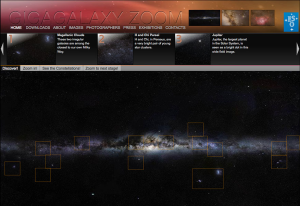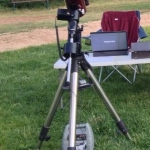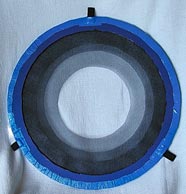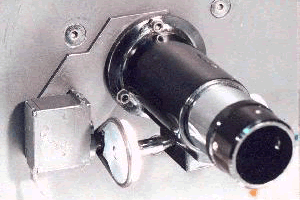
http://www.eso.org/public/products/minisites/website_0013/
From their about page:
ESOs GIGAGALAXY ZOOM: The Sky, from the Eye to the TelescopeContinue reading “Tour the Milky Way!”
Colorado Springs Astronomical Society
Education + Science + Star Parties + Star Viewings + Star Programs

http://www.eso.org/public/products/minisites/website_0013/
From their about page:
ESOs GIGAGALAXY ZOOM: The Sky, from the Eye to the TelescopeContinue reading “Tour the Milky Way!”
Rob Hawley has produced an educational video on YouTube, broken down into 4 segments, total is about 30 minutes.
The video is about finding astronomical objects using charts, aka “starhopping”. He uses charts from Sky Map Pro, and from Sky Tools V3, but refers to paper charts as well in the video.
Here is the link…
Lets schedule our first RMSS meeting for Sunday, Jan 10th… 1:00PM.
I’ll host it at my store on 8th Street (address will follow…) unless someone has a better idea!
I’ll need folks to handle:Continue reading “RMSS Planning Meeting”
A couple of days ago I came across this very interesting and “cool” website! Part of the Zooniverse (there is a link to Zooniverse on the links page). From the Zooniverse website, “Galaxy Zoo – The original Zooniverse project. Help astronomers figure out how galaxies form and evolve by classifying their shape. Over 50 million classifications so far but we need more!”
You register at the Galaxy Zoo website and then you can participate by classifying galaxies. They show you how and then you just classify when you have time. You can save the galaxies that you like the most to your own “gallery”. You can get very technical info on each galaxy, but don’t expect the Messier number!
There are also other things you can participate in, such as merging galaxies and detecting supernovae. Enjoy!
The Quadrantid meteor shower is one of the strongest meteor showers of the year, but observers can be disappointed if conditions are not just right. The point from where the Quadrantid meteors appear to radiate is located within the extinct constellation Quadrans Muralis. On modern star charts, this radiant is located where the constellations Hercules, Boötes, and Draco meet in the sky. The shower can appear almost nonexistent until about 11 p.m. Unfortunately, the radiant does not attain a very high altitude for most Northern Hemisphere observers before morning twilight puts an end to the show. The best observations are actually possible from countries with high northern latitudes, such as Canada, Finland, Sweden, and Norway. The display is virtually nonexistent for observers in the Southern Hemisphere.
The Quadrantids generally begin on December 28 and end on January 7, with maximum generally occurring during the morning hours of January 3/4. The Quadrantids are barely detectable on the beginning and ending dates, but observers in the Northern Hemisphere can see from 10 to around 60 meteors per hour at maximum. The maximum only lasts for a few hours.
For more info, go to the Meteor Showers Online website: http://meteorshowersonline.com/quadrantids.html
Here is a clever rendition of the Night before Christmas – the Astronomical Christmas that is….
‘Tis the Night Before Christmas and high in the sky
The stars are a-twinkling sight for the eye.
The First Quarter Moon on the 24th shines,
Begging new telescopes to sight on her line.
To read the rest, go to the Naval Oceonagraphy website at: http://www.usno.navy.mil/USNO/tours-events/sky-this-week/the-sky-this-week-2009-december-22-30
 When: Sat, January 23, 2010, 1:30pm – 3:30pm
When: Sat, January 23, 2010, 1:30pm – 3:30pm
Where: Bear Creek Nature Center
Description: Bring your telescope for this indoor workshop led by members of the Colorado Springs Astronomical Society. Learn how to use different kinds of telescopes, find out which will be the most effective for you and discover how to overcome the biggest bugaboo for beginners – the alignment procedure. Continue reading “Telescopes for Beginners Workshop”
Our next meeting will be held on Tues, January 26th, 2010 from 7-9pm at a NEW location!
Rockrimmon Library
832 Village Center Dr,
Colorado Springs, CO 80919
This is our annual Show-n-Tele meeting. Bring all the goodies you acquired at Christmas (and the months before) to show off to your fellow star gazers.
From Nasa – June 24, 2009 – Expedition 20 Flight Engineer Michael Barratt provides a 20-minute tour of the International Space Station, documenting the full 167 feet of the space station’s pressurized modules. Continue reading “ISS Tour”
From Floyd Glick — In case anyone is interested in “logging” their sightings of any Gemini meteors, there is a skychart available at:
http://www.bd-oculars.com/images/winter.pdf
You may plot the path of your sightings on the chart. If they are Gemini meteors, their apparent origin should radiate from the constellation Gemini (Castor and Pollox are the brightest stars in Gemini).
Happy hunting!
This is from October 7, 2009 – thought it was interesting for 2 reasons —Continue reading “Astronomy Night at the White House”
Since we are experiencing the wonderful clear, COLD skies of winter, I thought it appropriate to share this You Tube video about Orion and the Orion Nebula or M42. Enjoy!
From the Nasa website: Dec. 8, 2009: Make hot cocoa. Bundle up. Tell your friends. The best meteor shower of 2009 is about to fall over North America on a long, cold December night.
“It’s the Geminid meteor shower,” says Bill Cooke of NASA’s Meteoroid Environment Office. “and it will peak on Dec. 13th and 14th under ideal viewing conditions.” To read the rest of this article click on this link.
NOVEMBER 24, 2009
Time: 7PM – 9PM
BSCS Building
5415 Mark Dabbling Blvd
Colorado Springs, CO 80918
PRESENTATION [? To Be Determined]
Download the PDF below:
[download id=”15″]
Download the PDF below:
[download id=”2″]
by Steve Bygren, steve2822@earthlink.net
In the spring of 1991, I decided to build my own poncet table for my 10 inch dobsonian. I had recently read a number of articles on poncet tables, and I figured I couldn’t live without one. I decided to build my own because they are relatively straight forward to construct, and the commercial versions cost nearly three times what my telescope cost me to build.Continue reading “How To Build Your Own Poncet Table In Only 18 Months”
Following is an excerpt from an update by Jim (our VP) on our April Star Party. Out of all the star parties scheduled for this Week of Astronomy, this was the only one that wasn’t cancelled due to weather! It turned out great! To view this thread in the forum go to: http://www.csastro.org/forums/viewtopic.php?t=3516&highlight= There are also additional pictures in the gallery! – http://www.csastro.org/forums/modules.php?set_albumName=album15&op=modload&name=gallery&file=index&include=view_album.php
Skies cleared for the most part. Just a tad breezy and quite chilly but overall not too bad. Seeing was not as good as I had hoped with the muck in the air and of course the moon.
 BobV’s new 20″ Starmaster took first light and it was quite an awesome site to behold. Several times during the night I would go see what he was looking at and then run back to my scope to compare. The biggest WOW I got was some moons of Saturn. In BobV’s we had the three brightest (will have to go look up the names) as well as two very distinct moons close to the rings. In my scope there was ONLY the three bright moons, the two that I observed in BobV’s scope were no where to be found in mine. That’s just frakkin awesome!!
BobV’s new 20″ Starmaster took first light and it was quite an awesome site to behold. Several times during the night I would go see what he was looking at and then run back to my scope to compare. The biggest WOW I got was some moons of Saturn. In BobV’s we had the three brightest (will have to go look up the names) as well as two very distinct moons close to the rings. In my scope there was ONLY the three bright moons, the two that I observed in BobV’s scope were no where to be found in mine. That’s just frakkin awesome!!
I’m quite sure that BobV will be very very happy with his newest acquisition for quite some time to come.
We must have had 15 scopes out there though. Pretty good turnout despite the chilly weather.
Don’t think we got close to a 100 visitors but we did have a fair amount. I’m thinking we also had at least 30 PPCC students in that crowd.
Saturn and the Moon were viewed quite often. M13, M3, M42 and some doubles were also viewed.
Al, myself and some others took pictures early on. I’ll get mine posted here later as I’m sure Al will as well.
We started about 7:30 and went till 10:30.
Again…please pipe up with your name here if I don’t get it listed…
BobV, PapaJ, Bruce, KenF, Dennis, Floyd, Cindi, JimU, Al, JohnH, and others whose names escape me at the moment and myself.
Much thanx to all of those that helped support this event!
-JimW

by Ken Florentino
Many people have seen me use a home-built apodizing mask while observing planets and have inquired about its use and design. An apodizing mask (I sometimes call it my “60’s filter”) is used to cut through the seeing much like an aperture stop. Continue reading “A Do-It-Yourself Apodizing Mask”

by Steve Bygren, steve2822@earthlink.net
In the January, 1996 issue of Sky & Telescope, my picture showed up with a “servo focuser” gizmo that a member of my astronomy club (Ken Florentino) created. Since that time, several people have contacted me asking for details on how to get one working. A description follows…Continue reading “How to Build a Servo Focuser”